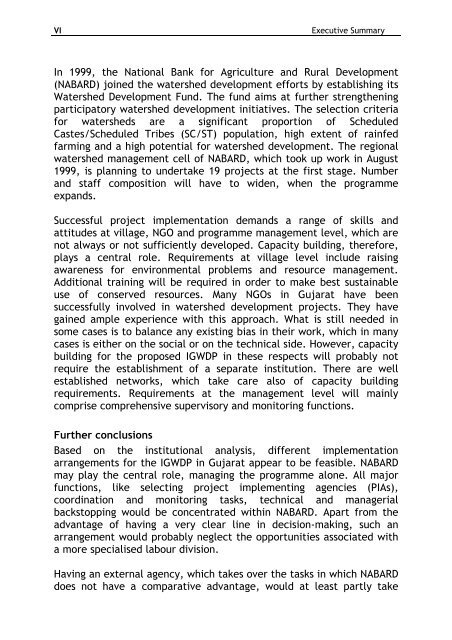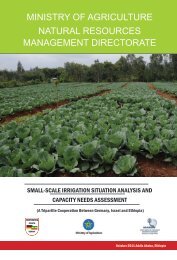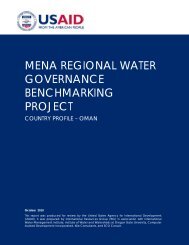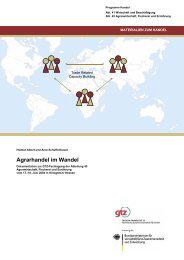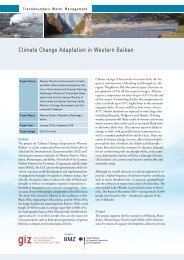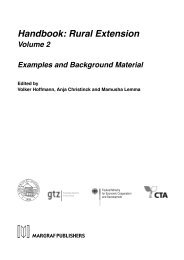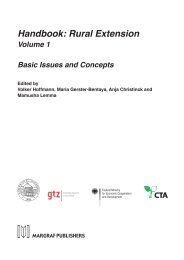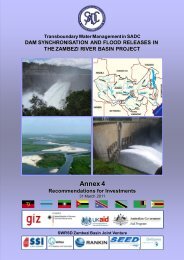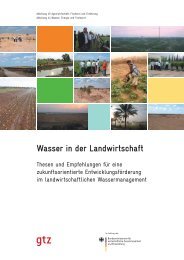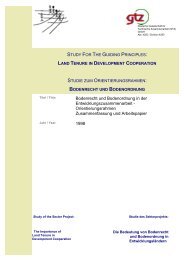Watershed Development in Gujarat - edoc - Humboldt-Universität zu ...
Watershed Development in Gujarat - edoc - Humboldt-Universität zu ...
Watershed Development in Gujarat - edoc - Humboldt-Universität zu ...
Create successful ePaper yourself
Turn your PDF publications into a flip-book with our unique Google optimized e-Paper software.
VIExecutive SummaryIn 1999, the National Bank for Agriculture and Rural <strong>Development</strong>(NABARD) jo<strong>in</strong>ed the watershed development efforts by establish<strong>in</strong>g its<strong>Watershed</strong> <strong>Development</strong> Fund. The fund aims at further strengthen<strong>in</strong>gparticipatory watershed development <strong>in</strong>itiatives. The selection criteriafor watersheds are a significant proportion of ScheduledCastes/Scheduled Tribes (SC/ST) population, high extent of ra<strong>in</strong>fedfarm<strong>in</strong>g and a high potential for watershed development. The regionalwatershed management cell of NABARD, which took up work <strong>in</strong> August1999, is plann<strong>in</strong>g to undertake 19 projects at the first stage. Numberand staff composition will have to widen, when the programmeexpands.Successful project implementation demands a range of skills andattitudes at village, NGO and programme management level, which arenot always or not sufficiently developed. Capacity build<strong>in</strong>g, therefore,plays a central role. Requirements at village level <strong>in</strong>clude rais<strong>in</strong>gawareness for environmental problems and resource management.Additional tra<strong>in</strong><strong>in</strong>g will be required <strong>in</strong> order to make best susta<strong>in</strong>ableuse of conserved resources. Many NGOs <strong>in</strong> <strong>Gujarat</strong> have beensuccessfully <strong>in</strong>volved <strong>in</strong> watershed development projects. They havega<strong>in</strong>ed ample experience with this approach. What is still needed <strong>in</strong>some cases is to balance any exist<strong>in</strong>g bias <strong>in</strong> their work, which <strong>in</strong> manycases is either on the social or on the technical side. However, capacitybuild<strong>in</strong>g for the proposed IGWDP <strong>in</strong> these respects will probably notrequire the establishment of a separate <strong>in</strong>stitution. There are wellestablished networks, which take care also of capacity build<strong>in</strong>grequirements. Requirements at the management level will ma<strong>in</strong>lycomprise comprehensive supervisory and monitor<strong>in</strong>g functions.Further conclusionsBased on the <strong>in</strong>stitutional analysis, different implementationarrangements for the IGWDP <strong>in</strong> <strong>Gujarat</strong> appear to be feasible. NABARDmay play the central role, manag<strong>in</strong>g the programme alone. All majorfunctions, like select<strong>in</strong>g project implement<strong>in</strong>g agencies (PIAs),coord<strong>in</strong>ation and monitor<strong>in</strong>g tasks, technical and managerialbackstopp<strong>in</strong>g would be concentrated with<strong>in</strong> NABARD. Apart from theadvantage of hav<strong>in</strong>g a very clear l<strong>in</strong>e <strong>in</strong> decision-mak<strong>in</strong>g, such anarrangement would probably neglect the opportunities associated witha more specialised labour division.Hav<strong>in</strong>g an external agency, which takes over the tasks <strong>in</strong> which NABARDdoes not have a comparative advantage, would at least partly take


